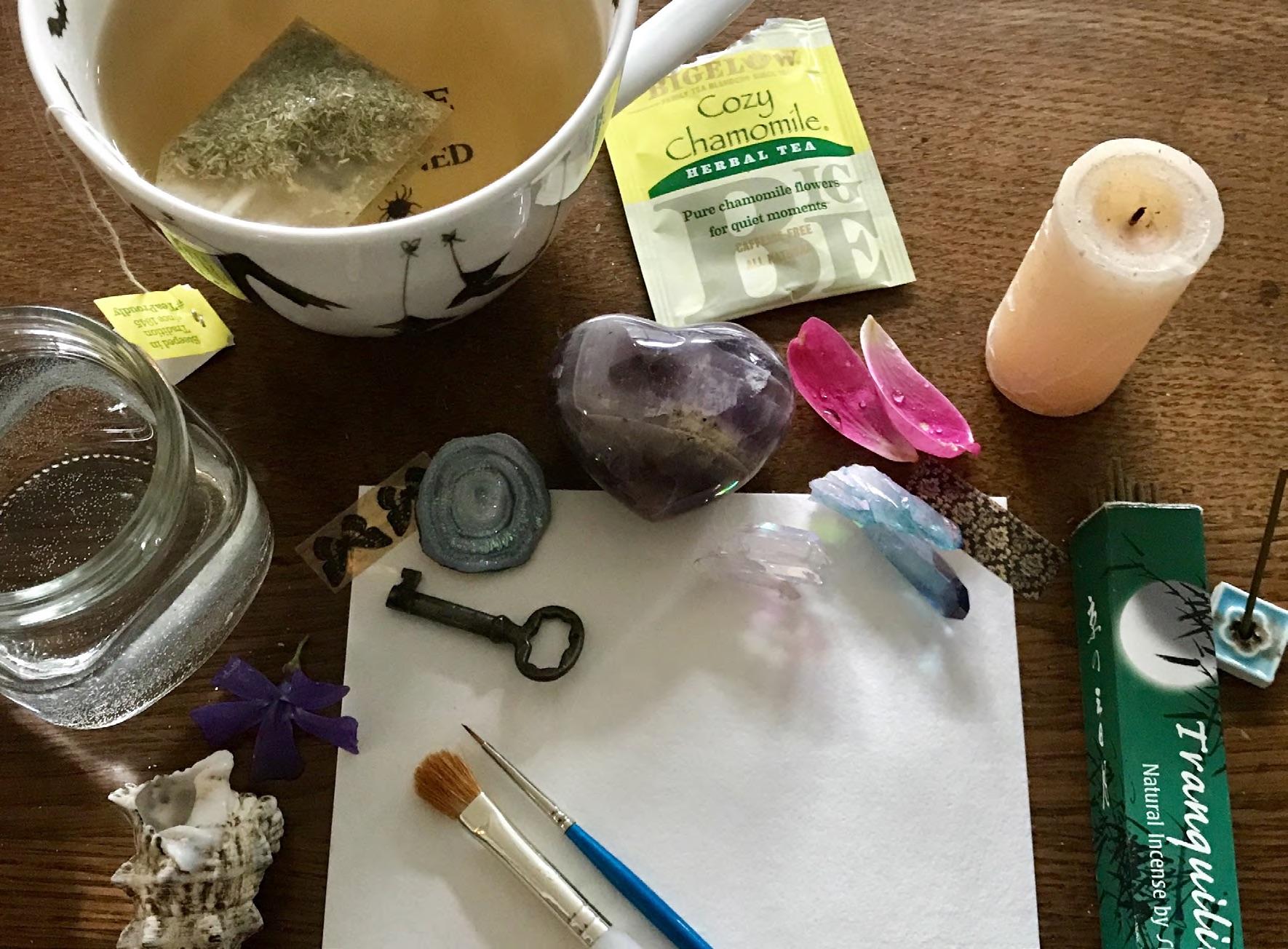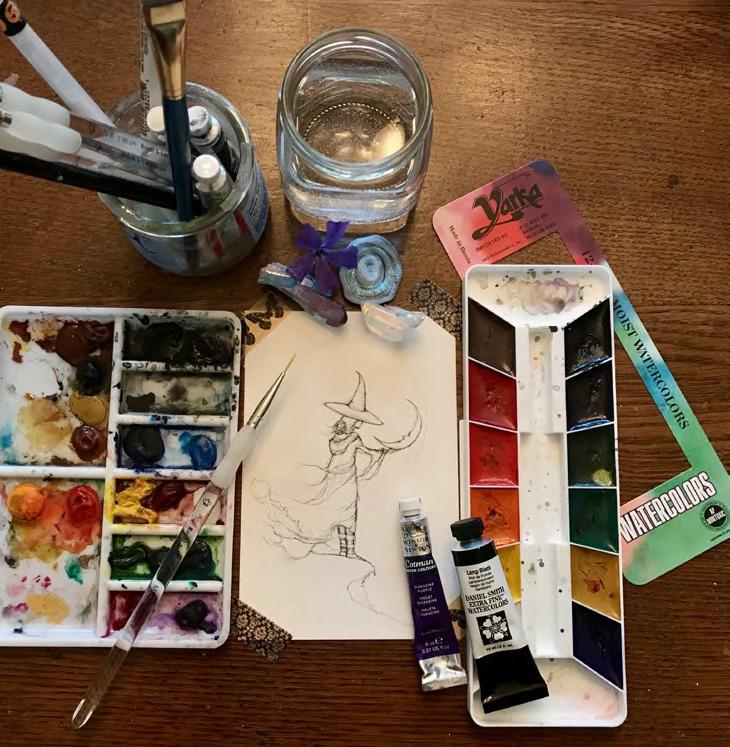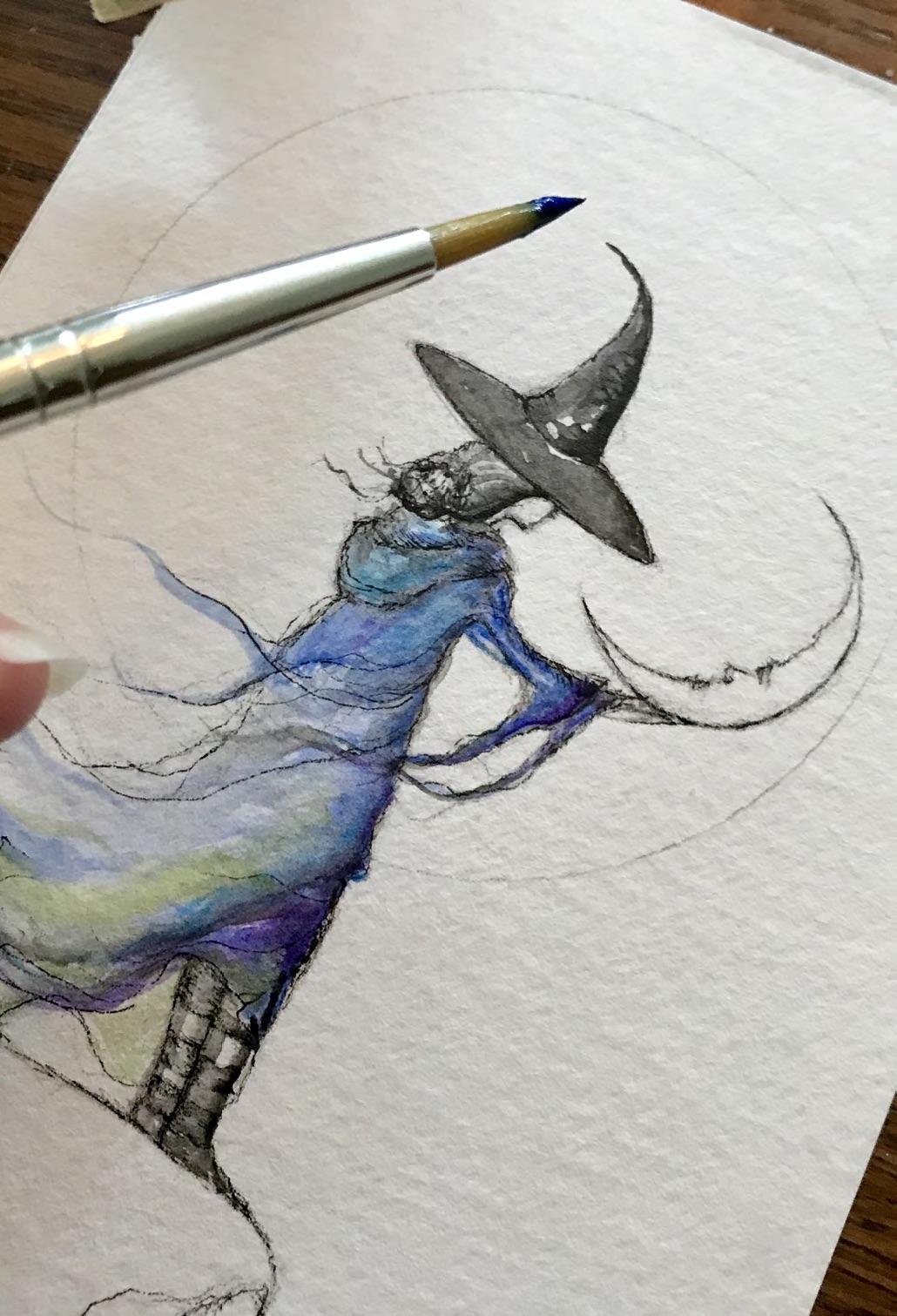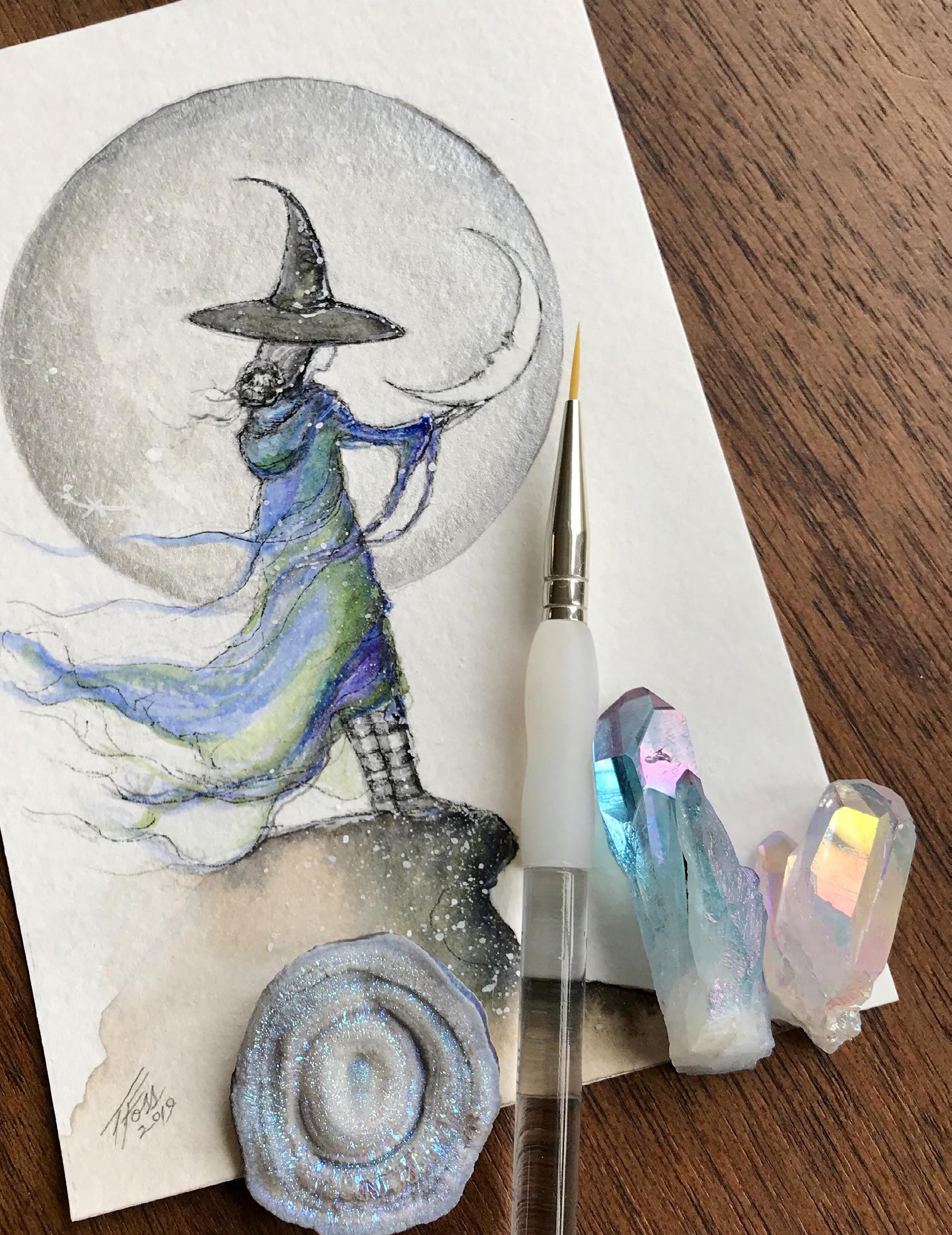Set up a comfortable and peaceful area to begin your art. This may include lighting a candle or incense and playing your favorite music in the background. I like to choose crystals from my collection, maybe a flower, leaves, or anything else to enhance some good vibes to set alongside my workspace. A cup of herbal tea to sip, as I avoid caffeine at this time so my hand does not shake. Choose a time when you will not be disturbed and try your best not to look at your phone or devices so your creativity can flow naturally.

I prefer painting using watercolor or acrylic paints. You do not have to use the most expensive or highest quality art supplies if you are a beginner, but I do suggest choosing good-quality paints, paper, brushes, and canvas. I personally prefer hard canvas panels instead of stretched canvas if I’m doing acrylic paints. If I’m working in watercolors, I use quality 140-pound cold or hot press paper. It needs to be thick enough so the paper holds its shape and does not curl or warp on you. Cold press watercolor paper has a tooth and feels bumpy with a texture, whereas hot press is smooth to the touch. You can experiment with different brushes, paints, canvas, and paper until you find what suits your style best.

Now comes the fun part. Paint something that you have interest in and something that you love—maybe a flower, tree, animal, the moon, a galaxy, or even a crystal. Paint from your imagination, research some images as reference, or use an actual item and create from a still-life display that you arrange. Begin by sketching lightly with a pencil. Now it is time to start experimenting with your paints, whether they are oil, acrylic, or watercolor. If you’re using watercolor, remember the paints will not travel or bleed where the paper is not wet, if you’re using a good quality paper. You can wet areas of the paper first and then add paint or use some paint and spread it with some water. Your colors will naturally mix and run together like magic. Layers of paint add depth and interest. Decide on your light source. Is the moon or sun casting light on your subject? Remember that where the light hits first will be brighter, becoming darker and casting shadows where the light diffuses or does not completely reach. Hold a flashlight to experiment.

Art has no rules. There is no right or wrong, so please do not become frustrated. Instead embrace the trial-and-error process. Start over if you feel you must, but don’t give up. Your art is a personal and unique expression of your soul. You may want to keep a small area set up in your home so it is convenient to paint on a whim when you’re feeling inspired.

Know when to stop and call your creation finished. There is just something about simplicity that I call “perfectly imperfect.” If you need to pause and walk away for a few moments, do so and then come back and see how you feel. At this time, you can even take a fine brush, pen, or pencil and add in fine details, brighter highlights, or even shimmering metallics. If you’re using acrylics or oils, you can coat with a varnish once your painting is dry. Watercolors do not need varnish and are instead framed under glass. Oils and acrylics are framed without glass. I also like to use decorative easels to display my paintings.
Your style will begin to show itself as your paint and practice. Whether your style is abstract, realistic, minimalistic, colorful, or monotone it is beautiful because it came from your heart.



































